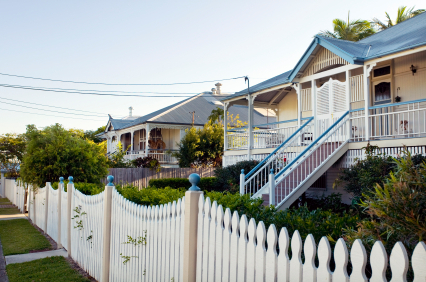Data collection
The Australian Community Capacity Study (ACCS) comprises multiple waves of data collection. To date data collection has taken place in two sites:
Brisbane
- Wave 1 (2005)
Chief Investigators: Lorraine Mazerolle; Ross Homel; Robert Stimson; Robert Sampson; Anna Stewart and Nancy Spencer. - Wave 2 (2008)
Chief Investigators: Ross Homel; Rebecca Wickes; James McBroom and Robert Sampson. - Wave 3 (2010)
Chief Investigators: Lorraine Mazerolle; Rebecca Wickes; Adrian Cherney and Kristina Murphy. - Wave 4 (2012)
Chief Investigators: Rebecca Wickes; Lynda Cheshire; Peter Walters; Jonathon Corcoran; Melanie Taylor; Beverley Raphael and Fran Norris.
Melbourne
- Wave 1 (2010)
Chief Investigators: Lorraine Mazerolle; Rebecca Wickes; Adrian Cherney and Kristina Murphy.
Wave 1
(ARC Linkage LP0453762)
Conducted in 2005, the first wave of the ACCS comprised surveys with approximately 4000 residents across 82 communities in Brisbane. The survey was conducted by researchers from Griffith University, The University of Queensland, Harvard University and various government departments in Queensland.
The study examined how a variety of social processes (listed below) influenced neighbourhood variations in crime and victimisation across a variety of different Brisbane communities:
- collective efficacy,
- informal social control;
- community cohesion;
- social capital;
- neighbourhood incivilities; and
- victimisation.
Wave 2
(ARC Discovery DP0771785)
Conducted in 2008 Wave 2 of the ACCS added a longitudinal aspect to the program of research. It comprises over 4000 interviews with residents across 148 suburbs that were wholly part of the same 82 communities sampled in Wave 1. The Wave 2 survey included the same questions as Wave 1 as well as a number of additional questions about:
- neighbouring behaviours;
- organisational membership and;
- formal and informal community regulation.
The ACCS Wave 2 research aimed to improve our understanding of the dynamic role of collective processes, social ties and social structures in explaining spatial and temporal variations in crime and disorder across Australian communities.
Wave 3
(ARC Centre for Excellence in Policing and Security RO700002; ARC Discovery DP1093960; ARC Discovery DP1094589)
In December 2010 we completed a third Wave of the ACCS in Brisbane. The survey built on two earlier waves of the ACCS survey in Brisbane.
Wave 3 of the ACCS comprised surveys with approximately 5000 residents across the same 148 Brisbane communities.
The survey asked the same questions as Waves 1 and 2 and added a range of new questions that allows us to explore:
- The role of key institutions, like the police, in creating a willingness for residents to work together to solve local problems;
- The impact of social ties that are both endogenous and exogenous to the community on the provision of social and material support for residents;
- Procedural justice and police legitimacy and their flow on effects in reducing crime and increasing social cohesion in at-risk communities.
Wave 4
(ARC Discovery DP120100990)
In May 2012 we conducted a fourth wave of the ACCS comprising approximately 5000 interviews with residents across the same 148 community in Brisbane. This wave of the ACCS focuses on community resilience in Brisbane suburbs in the aftermath of the 2011 flood disaster.
Understanding and enhancing Community Resilience is a high priority as we face significant environmental and national security challenges. However, given the sudden and unexpected nature of disasters and threats, current research only provides post event evaluations of Community Resilience.
Wave 4 of the ACCS in Brisbane examines the key community processes and structures associated with community resilience before and after the 2011 Brisbane floods. In combination with earlier waves of survey data, the Wave 4 ACCS will provide critical insights into preparing for future disasters in Australia and elsewhere.
Barriers and Facilitators of Neighbourhood Networks and Cohesion
In 2015 we started a new reseach project. This project is the first to examine how socio-demographic adn physical features shape neighbourhood networks and cohesion. Drawing on Waves 2, 3 and 4 of the ACCS survey, census and spatial data for Brisbane suburbs, this project critically assesses the social and physical drivers that explain neighbourhood networks and cohesion over time and across place. Results will provide unique insights into the underpinning drivers of social cohesion and be of direct practical relevance for urban planning.
Project team:
- Dr Rebecca Wickes
- Professor Jonathan Corcoran
- Professor Jon Hipp
- Dr Renee Zahnow
Wave 1
(ARC Centre for Excellence in Policing and Security RO700002; ARC Discovery DP1093960; ARC Discovery DP1094589)
 In December 2010 we completed the first wave of the ACCS in Melbourne. This wave of the ACCS comprised surveys with approximately 5000 residents across 150 communities in Melbourne.
In December 2010 we completed the first wave of the ACCS in Melbourne. This wave of the ACCS comprised surveys with approximately 5000 residents across 150 communities in Melbourne.
The Wave 1 Melbourne survey was conducted at the same time as the Wave 3 Brisbane survey, using the same instruments as the Wave 3 Brisbane survey.
The Melbourne Wave 1 survey gathered information about:
- collective efficacy;
- informal social control;
- community cohesion;
- social capital;
- neighbourhood incivilities;
- victimisation;
- the role of key institutions, like the police, in creating a willingness for residents to work together to solve local problems;
- the impact of social ties that are both endogenous and exogenous to the community on the provision of social and material support for residents;
- procedural justice and police legitimacy and their flow on effects in reducing crime and increasing social cohesion in at-risk communities.
The first wave of the ACCS in Melbourne also included the Ethnic Community Study of nearly 500 people from Arabic, Indian and Vietnamese backgrounds in the sampled suburbs.
